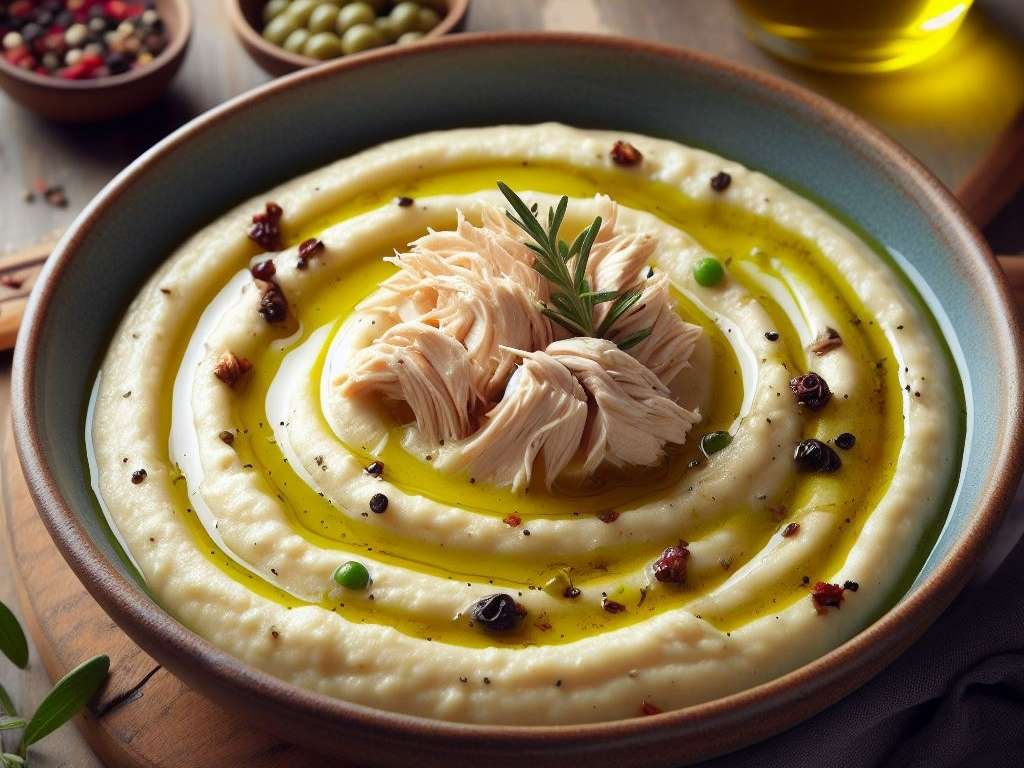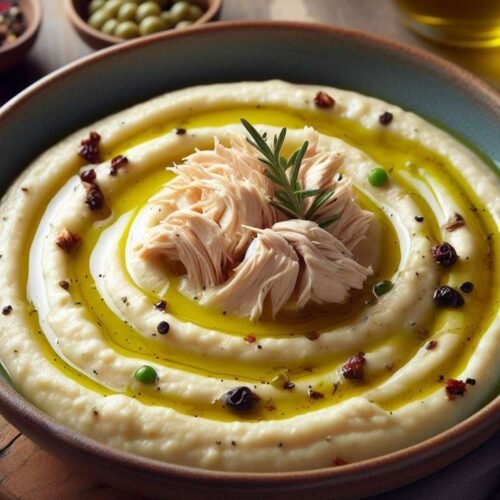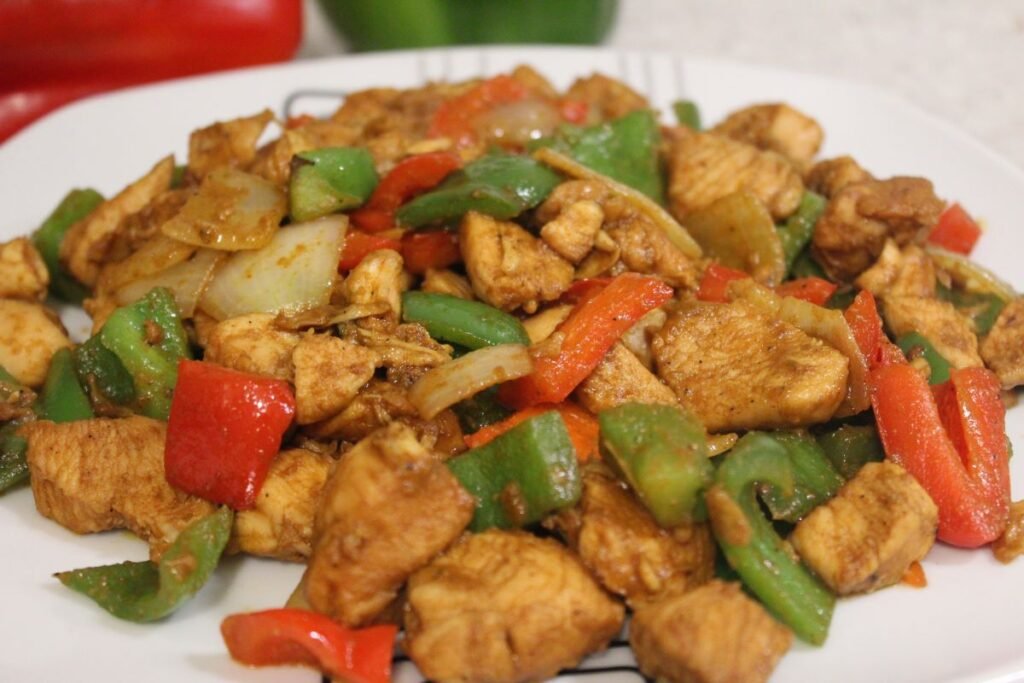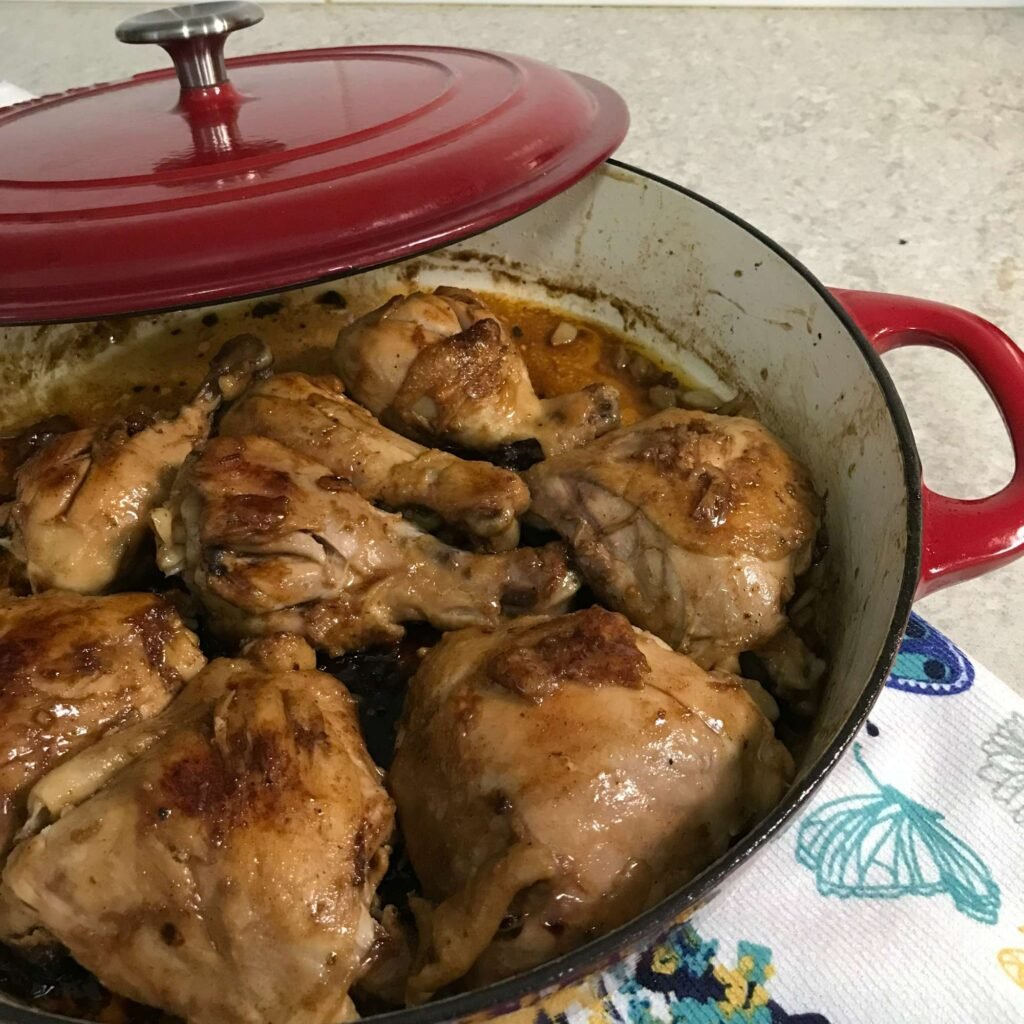When we think of delightful recipes, healthy pureed chicken recipes for adults may not be the first thing that comes to mind. However, the world of gastronomy holds a pleasant surprise for adults seeking nutrition, taste, and soft chicken. Who says that pureed is only for kids?
Regardless of why you need these recipes, like weight loss, recent surgery, or just because you are on a bariatric pureed diet, I gathered this selection of recipes thinking of you.
In this blog post, I’ll dive into the ins and outs of pureed chicken, exploring easy pureed chicken recipes for adults, its appeal, health benefits, and a variety of mouthwatering recipes that deserve a place in your kitchen.
Getting Started with Pureed Chicken
Before anything, let’s lay the foundation. To create delectable pureed chicken dishes, you’ll need the right ingredients and tools. It’s not just about blending; it’s about crafting delicious foods that will nourish your body.
Essential Ingredients for Pureed Chicken Recipes
Pureed chicken may sound simple, but it’s a canvas for a symphony of flavors. You’ll want to source the freshest chicken and complementary ingredients like vegetables, herbs, and spices to create a harmonious dish.
Tools and Equipment for Preparing Pureed Chicken
Every artist needs their tools, and so we’ll need some tools too. From blenders to food processors, the right equipment can make the difference between a chunky mess and a silky masterpiece.
Health Benefits of Pureed Chicken
Beyond its delightful taste, pureed chicken packs a nutritional punch that’s often underestimated. Let’s delve into the science behind why this poultry deserves a prominent place in your diet.
Protein-Packed Goodness: The Importance of Chicken
Chicken is a protein powerhouse, crucial for muscle maintenance and overall health. Discover how a dose of pureed chicken can support your body’s needs.
Chicken is packed with Nutrient. Vitamins and Minerals in Chicken Puree is like having a protein shake.
Additionally chicken brings a host of essential vitamins and minerals to the table that contribute to your overall well-being.
But you know all of that.
Choosing the Right Chicken
Not all chickens are created equal, and your choice can impact both taste and ethics. Let’s explore the options to help you make an informed decision.
Organic vs. Conventional Chicken: Which to Pick
When considering the base for your pureed chicken recipes, the choice between organic and conventional chicken is crucial. Organic chickens are raised following strict regulations, often ensuring no synthetic pesticides, herbicides, or GMOs in their feed.
They usually aren’t given antibiotics routinely and tend to be raised in more humane conditions with outdoor access.
However, they typically come with a higher price tag due to the costs of organic farming and certification. On the other hand, conventional chickens are generally less expensive and are raised to meet standard agricultural guidelines. They might be given antibiotics as a preventive measure and are often fed grains that could include GMOs or have been treated with synthetic pesticides.
The choice between organic and conventional largely depends on your budget, health concerns, and personal values regarding animal welfare and environmental impact.
In terms of flavor, this guide can help you decide.
Preparing Chicken for Pureeing
To achieve a smooth and soft pureed chicken dish the first step begins with the preparation.
Let’s discuss cooking methods and the secrets to achieving the perfect texture.
Cooking Methods: Roasting vs. Boiling
When making pureed chicken, the cooking method can greatly influence the final taste and texture.
Roasting chicken delivers a rich, caramelized flavor and an aromatic profile, but it might require more added liquid during pureeing due to its drier nature. This method can offer a deeper flavor but takes a bit longer.
In contrast, boiling provides a milder taste and a softer, moister texture, ideal for easy pureeing. Boiling is typically quicker and can also produce a nutritious broth if you’re looking to retain some of the water-soluble nutrients.
In essence, if you desire a robust flavor profile, consider roasting; for a simpler and moist result, boiling is a reliable choice for your pureed chicken.
How to puree chicken and achieve the perfect texture
Achieving the perfect texture in pureed chicken can make a big difference, especially for those on special diets or who have difficulty swallowing. Here are some steps and tips to help you achieve a smooth and consistent texture in pureed chicken:
Select the Right Cut
Opt for chicken breasts, which are leaner and easier to puree smoothly compared to fattier parts like thighs.
Cook Thoroughly
Ensure the chicken is fully cooked, making it softer and easier to blend. Boil or steam the chicken, as these methods retain moisture and result in softer meat.
Chill Before Pureeing
Let the chicken cool down after cooking. This can help with a smoother blending process.
Remove Skin and Bones
Before pureeing, remove any skin or bones to prevent any hard bits or uneven textures.
Use a High-Quality Blender/Food Processor
The better your blender or food processor, the smoother your chicken puree will be.
Add Liquid
When blending, add chicken broth, milk, or water to aid in the blending process and achieve the desired consistency. Start with a small amount and add more as needed. The liquid will help break down the fibers and result in a creamier texture.
Strain If Necessary
For an extra-smooth texture, after pureeing, you can strain the mixture through a fine sieve or cheesecloth to remove any remaining bits or fibrous material.
Seasoning
Pureed chicken can be bland on its own. Add a pinch of salt, pepper, or any preferred seasonings to enhance the flavor.
Reheat Properly
If you’re reheating the pureed chicken, do so gently, using a stovetop or microwave, stirring frequently to ensure even heating and to prevent the puree from drying out.
Storing
If you’re making a large batch, store portions in an airtight container in the refrigerator for up to 3 days or freeze for longer storage. Make sure to label and date your containers.
Texture Adjustments
Depending on the purpose of the puree (e.g., medical diets, baby food, culinary applications), you may wish to adjust the consistency. For a thicker puree, use less liquid or consider adding a bit of cooked rice or potatoes to the blend.
Flavoring Your Pureed Chicken
Pureed chicken is not just about texture; it’s a playground of flavors. Elevate your dishes with herbs, spices, and other additions. Make sure your chicken broth rocks, it will make a huge difference.
Elevate the Taste Profiles your pureed chicken with a palette of herbs and spices that add depth and complexity to your meals.
Consider using Dairy and Non-Dairy Alternatives. Creaminess without compromise. Explore options for achieving that luscious texture, whether you embrace dairy or opt for non-dairy alternatives.
Broths and Stocks in Chicken Purees
Broths and stocks can transform your pureed chicken into a rich and flavorful masterpiece. Harness their magic. You can prepare your own or buy it and have it on hand when it’s time to cook.
Simple Pureed Chicken Recipes for Adults

A wholesome meal that combines the goodness of chicken and an array of vegetables, providing a balanced and comforting dish.
You can use the vegetable of your choice for this one this is how it goes:
Ingredient:
- ½ tablespoon Olive Oil
- ½ small Onion, finely chopped
- 160g (1 cup chopped) Boneless Skinless Chicken Breast or Thighs, chopped into small cubes
- 300g / 11oz (2 cups chopped) Sweet Potato,
- 80g / ⅓ cup Carrot peeled and chopped
- 250ml / 1 cup Chicken Stock homemade or store-bought.
- Salt and Pepper to taste
Instructions
Warm the oil in a medium-sized pot over medium heat. Once hot, sauté the onions for about 2-3 minutes. Next, introduce the chicken, stirring briefly for about 30 seconds or until it appears opaque. Incorporate the sweet potato, carrot, and stock into the pot, bringing the mixture to a boil. Once boiling, reduce the heat, cover, and allow to simmer gently for approximately 15 minutes or until the vegetables can easily be pierced with a fork. Using a slotted spoon, move the chicken and vegetables into a blender or food processor, setting aside the broth. Blend until you reach your preferred consistency, adding the reserved broth in tablespoon increments if a silkier texture is desired.
Garlic and Herb-Infused Chicken Delight
Experience the aromatic delight of garlic and herbs as they infuse every bite of this pureed chicken dish with a burst of flavor.
Following the previous instruction add garlic and the herbs of your choice. I love cilantro so I would be inclined to use it. But you can add the one you like the most. You won’t get it wrong.
Spiced Chicken Puree with Turmeric
Unlock the anti-inflammatory properties of turmeric while savoring the warm, earthy flavors of spiced chicken puree. If you can eat spice, why not add a bit of heat to your recipe?
Ingredients:
2 boneless, skinless chicken breasts
1 tablespoon olive oil
1 small onion, finely chopped
2 cloves garlic, minced
1 teaspoon ground turmeric
1/2 teaspoon ground cumin
1/2 teaspoon ground coriander
1/4 teaspoon ground ginger
Salt and pepper to taste
1 cup chicken broth (low-sodium)
1/2 cup coconut milk (full-fat)
Fresh cilantro leaves for garnish
Instructions:
Start by preparing the chicken breasts. Season them with salt and pepper on both sides.
In a large skillet, heat the olive oil over medium-high heat. Add the chicken breasts and cook for about 5-7 minutes on each side, or until they are cooked through and no longer pink in the center. Remove the chicken from the skillet and set it aside to cool.
In the same skillet, add the chopped onion and minced garlic. Sauté them for about 2-3 minutes, or until they become soft and translucent.
Add the ground turmeric, ground cumin, ground coriander, and ground ginger to the skillet. Stir well to combine and cook for another 2 minutes to toast the spices, releasing their flavors and aromas.
Pour in the chicken broth and coconut milk. Bring the mixture to a simmer and let it cook for 5-7 minutes, allowing the flavors to meld together.
While the sauce simmers, pureed the chicken in a blender. Add some stock so it is easier to blend.
Add the pureed chicken to the simmering sauce. Stir to combine and let it cook for an additional 5 minutes, allowing the chicken to absorb the flavors of the sauce.
Taste the puree and adjust the seasoning with more salt and pepper if needed.
Once the puree is heated through and well combined, remove it from heat.
Serve the Spiced Chicken Puree with Turmeric hot, garnished with fresh cilantro leaves for a burst of freshness and color.
Enjoy your homemade Spiced Chicken Puree with Turmeric! It’s a delicious and nutritious dish that combines the warmth of spices with the goodness of chicken and turmeric.
Lemon and Rosemary Chicken Bliss
Refreshingly light, this lemon and rosemary-infused chicken puree is a delightful balance of zesty and aromatic.
Ingredients:
- 2 boneless, skinless chicken breasts
- 2 tablespoons olive oil
- 2 cloves garlic, minced
- 2 sprigs fresh rosemary
- Zest of 1 lemon
- Juice of 1 lemon
- Salt and black pepper to taste
- 1/2 cup chicken broth (low-sodium)
- 1/4 cup heavy cream
- Fresh rosemary sprigs and lemon slices for garnish (optional)
Follow the same instructions from the previous recipe.
Italian Chicken Pureed
You can adapt the recipes to your liking. Italian dressing to marinate your chicken before pureeing and you will have the desired results.
Mexican Chicken Puree
Do the same and cook your chicken using your preferred Mexican way. There are plenty of Mexican chicken recipes you can use.
Pureed Chicken Soup
Pureed chicken isn’t confined to main dishes; it can elevate snacks and complement your meals. This recipe is a delicious example. It’s like having a Protein Shake.
Beyond the Main Course
Pureed chicken isn’t confined to main dishes; it can elevate snacks and complement your meals. Let’s explore these creative avenues.
Healthy Buffalo Chicken Dip
Serving and Storing Pureed Chicken Dishes
Presentation and preservation are vital aspects of the pureed chicken experience. Learn how to make your dishes appealing and maintain their flavor.
Pureed Chicken Salad Recipe
This Chicken Salad Recipe is healthier than other version. Make sure to source the ingredients that work for you and feel free to add or remove whatever you want. Cooking is an adventure so live up to it and enjoy. For example, you could add cottage cheese for more protein.
Pureed Chicken Apple and Kale

Simple Pureed Chicken Recipes for Adults
Ingredients
- 1/2 tbsp olive oil
- 1/2 onion
- 1 cup chicken
- 2 cups Sweet Potato
- 1/3 cup Carrot peeled and chopped
- 1 cup Chicken Stock
- 1/4 tbsp salt (adjust to taste)
- 1/4 tsp Pepper
Instructions
- Warm the oil in a medium-sized pot over medium heat. Once hot, sauté the onions for about 2-3 minutes.
- Next, introduce the chicken, stirring briefly for about 30 seconds or until it appears opaque.
- Incorporate the sweet potato, carrot, and stock into the pot, bringing the mixture to a boil.
- Once boiling, reduce the heat, cover, and allow to simmer gently for approximately 15 minutes or until the vegetables can easily be pierced with a fork.
- Using a slotted spoon, move the chicken and vegetables into a blender or food processor, setting aside the broth.
- Blend until you reach your preferred consistency, adding the reserved broth in tablespoon increments if a silkier texture is desired.
Notes
| Nutrition Facts | |
|---|---|
| Servings: 2 | |
| Amount per serving | |
| Calories | 358 |
| % Daily Value* | |
| Total Fat 6.3g | 8% |
| Saturated Fat 1.2g | 6% |
| Cholesterol 54mg | 18% |
| Sodium 1413mg | 61% |
| Total Carbohydrate 50.5g | 18% |
| Dietary Fiber 8.8g | 32% |
| Total Sugars 17.5g | |
| Protein 25.5g | |
| Vitamin D 0mcg | 0% |
| Calcium 51mg | 4% |
| Iron 8mg | 44% |
| Potassium 1327mg | 28% |
| *The % Daily Value (DV) tells you how much a nutrient in a food serving contributes to a daily diet. 2,000 calories a day is used for general nutrition advice. | |
| Recipe analyzed by |
|



